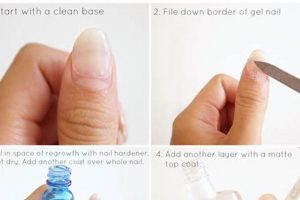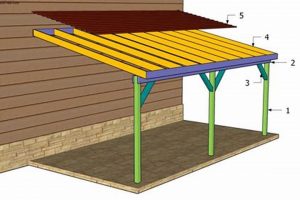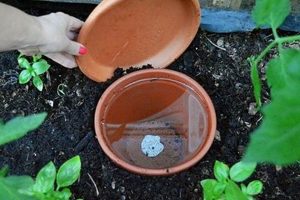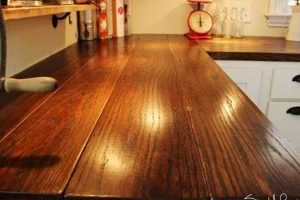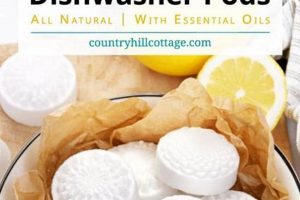A homemade embellishment designed to adorn a cake, often constructed from readily available materials, provides a personalized touch to celebratory desserts. Examples include miniature paper banners strung between skewers, fondant figurines crafted to match a theme, or edible images printed on frosting sheets and carefully applied.
These crafted adornments offer several benefits, including cost savings compared to commercially produced alternatives and a high degree of customization. Historically, cake decorations signified affluence and skill; crafting one’s own reflects a resurgence in valuing handcrafted items and individual expression. The ability to tailor the design ensures the finished product complements the specific occasion and the recipient’s preferences.
The subsequent sections will detail specific techniques, material suggestions, and design considerations for creating bespoke cake embellishments. Guidance will be provided on selecting appropriate materials, ensuring food safety, and executing various design concepts effectively.
DIY Cake Topper
The following guidelines offer practical advice for achieving professional-looking results when crafting a homemade cake decoration.
Tip 1: Material Selection is Paramount. Ensure that all materials that will come into direct contact with the cake are food-safe. This includes using edible glues, food-grade paints, and parchment paper as a barrier between non-edible components and the cake itself. Consider the stability of materials; for example, fondant will soften with high moisture content.
Tip 2: Plan the Design in Advance. Sketching the design beforehand helps visualize the final product and avoid errors during construction. It also allows for accurate measurement of materials, preventing waste. Consider the cake’s size and shape when determining the topper’s dimensions to maintain visual harmony.
Tip 3: Utilize Templates for Precision. Employ templates, whether handmade or computer-generated, for intricate designs. Templates ensure consistent shapes and sizes, particularly when creating multiple identical elements. This is particularly useful for cutting fondant letters or geometric shapes.
Tip 4: Employ Structural Supports as Needed. For toppers with significant height or weight, internal supports such as skewers or dowels may be necessary to prevent collapse. These supports should be discreetly incorporated into the design and securely anchored to the cake.
Tip 5: Prioritize Cleanliness and Hygiene. Maintain a clean work surface and wash hands thoroughly before handling edible materials. This minimizes the risk of contamination and ensures the topper is safe for consumption. Use disposable gloves when handling food coloring or other substances that may stain.
Tip 6: Practice Techniques Beforehand. If the design involves new techniques, such as sugar flower creation or fondant sculpting, practice on scrap materials first. This allows refinement of skills and reduces the likelihood of mistakes on the final topper.
Tip 7: Allow Adequate Drying Time. Some components, such as fondant figurines or sugar flowers, require time to dry and harden. Ensure sufficient drying time as specified by the material’s instructions, typically 24-48 hours, to prevent damage during handling and placement.
Successful homemade cake decorations require careful planning, attention to detail, and adherence to food safety guidelines. These tips provide a foundation for creating visually appealing and structurally sound embellishments.
The following section will provide examples of different styles and inspirations for cake decoration, further expanding on these fundamental concepts.
1. Material Food Safety
Material food safety constitutes a fundamental consideration in the creation of any homemade cake embellishment. The selection of appropriate components dictates the edibility and overall safety of the finished product, mitigating potential health risks associated with ingestion.
- Edible Glue Composition
Edible glue, utilized for adhering various elements, must be formulated from food-grade ingredients. Common recipes include combinations of powdered sugar, water, and meringue powder. The use of non-food-safe adhesives, such as craft glue, is strictly prohibited due to potential toxicity.
- Food-Grade Colorants
Colorants employed for tinting fondant, frosting, or other edible components should be specifically designated as food-grade. These colorants undergo rigorous testing to ensure they are free from harmful contaminants and meet regulatory safety standards. Non-food-grade dyes can contain heavy metals or other substances detrimental to health.
- Parchment Paper as a Barrier
Parchment paper acts as a barrier between non-edible elements, such as cardboard bases or structural supports, and the cake or edible components. This prevents the migration of potentially harmful substances from the non-edible materials into the food. The parchment paper should be food-grade and designed for baking applications.
- Edible Ink Cartridges
When utilizing edible printers for applying images to frosting sheets or other edible surfaces, it is imperative to employ edible ink cartridges specifically designed for this purpose. These inks are formulated with food-grade dyes and undergo testing to ensure their safety for consumption. Regular printer ink is toxic and should never be used.
The stringent adherence to food safety protocols during material selection is non-negotiable when crafting homemade cake decorations. Failure to prioritize food safety can result in adverse health consequences for consumers. Therefore, thorough research and careful selection of materials are essential to ensure the safety and enjoyment of the finished product.
2. Design Conceptualization
Design conceptualization, in the context of homemade cake decorations, serves as the foundational stage upon which all subsequent creative and practical endeavors are built. A well-defined concept ensures a cohesive and visually appealing final product, aligning the embellishment with the overall aesthetic and thematic intent of the cake.
- Thematic Alignment
The initial phase involves establishing thematic congruence between the cake’s purpose and the topper’s design. For instance, a child’s birthday cake might necessitate a topper incorporating cartoon characters or age-appropriate motifs. The design should reflect the event and its intended audience. Consider, for example, a graduation cake utilizing symbolic elements such as diplomas, graduation caps, or school colors. Misalignment can detract from the cake’s overall impact.
- Material Suitability Assessment
Conceptual
ization informs the selection of appropriate materials. A design involving intricate floral arrangements may require fondant or gum paste due to their malleability and capacity for detailed modeling. Conversely, a simpler geometric design could utilize cardstock or pre-made edible decorations. The material chosen must be compatible with the intended design and possess the necessary structural integrity. Failure to consider this results in flawed execution. - Scale and Proportion Considerations
The design must account for the cake’s dimensions and overall scale. A disproportionately large topper can overwhelm the cake, while a diminutive topper may appear insignificant. Careful consideration of the topper’s height, width, and depth relative to the cake’s size is crucial for achieving visual harmony. This often involves sketching or creating a mock-up to assess the spatial relationship. Overlooking this element leads to an unbalanced presentation.
- Structural Integrity Planning
Complex designs often require internal support to prevent collapse or distortion. Design conceptualization should incorporate a plan for structural reinforcement using skewers, dowels, or other food-safe supports. The placement and integration of these supports must be discreet and aesthetically unobtrusive. Neglecting this aspect can result in a structurally unstable and visually unappealing topper.
Effective design conceptualization transforms the creative process from a haphazard endeavor into a strategic and purposeful undertaking. The resulting homemade cake decoration not only enhances the cake’s aesthetic appeal but also reflects a thoughtful and well-executed vision, thereby ensuring success.
3. Structural Support
Structural support, in the realm of homemade cake decorations, represents a critical engineering component often unseen yet fundamentally necessary. It provides the framework that enables complex designs, ensures stability, and prevents collapse, allowing for elaborate creations that would otherwise be impossible.
- Internal Skewers and Dowels
Internal supports, such as wooden skewers or plastic dowels, provide hidden reinforcement within the topper’s core. These elements are particularly crucial for vertically oriented designs or those with significant weight concentrated at the top. For example, a multi-tiered fondant castle necessitates internal skewers running through each layer to prevent structural failure. These supports must be food-safe and discreetly integrated into the design. The absence of such support invariably results in a toppling or sagging topper.
- Cake Boards and Bases
The base upon which the topper rests, frequently a circular or shaped cake board, provides a stable foundation. This base distributes the topper’s weight evenly across the cake’s surface, preventing localized sinking or deformation of the frosting. For heavier toppers, a thicker or reinforced cake board is essential. Consider a topper incorporating heavy sugar paste flowers; a flimsy base would compromise the cake’s structural integrity. Proper base selection is paramount for overall stability.
- Edible Adhesive Reinforcement
Edible adhesives, like royal icing or melted chocolate, serve not only to attach decorative elements but also to provide additional structural reinforcement. These adhesives create strong bonds between components, increasing the topper’s resistance to stress and movement. For example, securing delicate sugar flowers to a fondant base with royal icing strengthens the connection and prevents detachment during transport. Judicious use of edible adhesives significantly enhances structural robustness.
- Wire Armatures for Sculptural Elements
For elaborate sculpted figures or dynamic poses, wire armatures provide an internal framework that allows for greater flexibility and stability. These armatures, typically constructed from food-safe floral wire, support the weight of the edible medium, such as fondant or gum paste, and prevent sagging or distortion. A sculpted fondant dragon, for instance, would require a wire armature to support its outstretched wings and maintain its pose. Wire armatures enable intricate designs that would otherwise be structurally unsound.
The strategic implementation of structural support elements represents the difference between a visually appealing creation and a structurally compromised failure. The selection and integration of appropriate supports, from internal skewers to reinforced bases, are crucial for ensuring the longevity and visual impact of any homemade cake decoration. Attention to structural detail elevates the craft from mere decoration to a form of edible artistry.
4. Edible Mediums
Edible mediums represent a foundational element in the creation of homemade cake decorations. Their properties directly influence the achievable aesthetics, structural integrity, and overall presentation of a cake topper. Selection of an appropriate edible medium dictates the scope of design possibilities, ranging from simple embellishments to intricate sculptural representations. The functionality and artistic potential of a DIY cake topper are inextricably linked to the characteristics of the materials employed.
For instance, fondant, a pliable sugar paste, allows for detailed modeling and smooth surface finishes, making it suitable for creating character figures or geometric shapes. Royal icing, known for its rapid hardening, is ideal for intricate piping work and securing decorative elements. Chocolate, in its various forms, offers opportunities for creating textured surfaces, molded shapes, or even edible paint. The choice of medium must align with the desired aesthetic, structural requirements, and the creator’s skill level. A beginner may find fondant more forgiving, while an experienced decorator might prefer the precision offered by royal icing. Incorrect medium selection can lead to structural instability, aesthetic deficiencies, or an inability to execute the intended design.
In summary, the understanding and skillful application of edible mediums are paramount to successful cake decoration. This knowledge empowers creators to translate design concepts into tangible, edible art. The selection process requires careful consideration of the project’s aesthetic goals, structural demands, and the decorator’s individual skill set. Overlooking the importance of this connection limits the potential of the DIY cake topper and undermines the overall quality of the finished product.
5. Assembly Techniques
The efficacy of any homemade cake decoration is intrinsically linked to the employed assembly techniques. The meticulous execution of these techniques dictates the structural integrity, aesthetic presentation, and overall success of the final product.
- Layering and Stacking
Layering and stacking involves the sequential placement of components to create depth and dimension. This technique is commonly used to construct multi-tiered toppers or to create a sense of visual hierarchy. For instance, layering fondant petals to form a rose requir
es precise alignment and secure adhesion. Improper layering can result in a disjointed or unstable final structure. The structural soundness relies on the methodical approach to layering and the judicious application of edible adhesives. - Adhesion Methods
Various adhesion methods, including the use of royal icing, melted chocolate, or edible glue, facilitate the secure attachment of disparate elements. The choice of adhesive depends on the materials being joined and the desired strength of the bond. Securing delicate sugar flowers to a fondant base necessitates the use of a strong and fast-drying adhesive like royal icing. Insufficient adhesion can lead to the detachment of components and compromise the overall aesthetic appeal. Consideration of material compatibility and adhesive strength is paramount.
- Support Integration
The integration of structural supports, such as skewers or dowels, is crucial for maintaining the stability of complex or vertically oriented designs. These supports must be strategically placed to provide reinforcement without detracting from the aesthetic appearance. A tall fondant figure, for example, requires an internal skewer to prevent sagging or collapse. The skillful integration of supports ensures the longevity and visual integrity of the cake decoration. Improper placement can compromise both structural integrity and aesthetic appeal.
- Finishing Touches
Finishing touches, such as the application of edible luster dust or the addition of intricate piping details, elevate the overall presentation of the cake decoration. These details enhance the visual appeal and create a polished, professional look. Dusting fondant leaves with edible luster dust adds a realistic shimmer, while delicate piping can create intricate patterns. The careful execution of finishing touches transforms a simple design into an elaborate creation.
Mastering assembly techniques is essential for crafting visually stunning and structurally sound homemade cake decorations. These techniques are not merely procedural steps, but rather artistic skills that require practice and attention to detail. The successful application of these methods ensures that the final product meets both aesthetic and structural requirements, resulting in a cake decoration that is as pleasing to the eye as it is to the palate.
6. Theme Compatibility
Theme compatibility serves as a crucial determinant in the success of a homemade cake decoration. The degree to which the topper aligns with the event’s intended motif significantly impacts the overall aesthetic coherence and celebratory impact of the decorated cake.
- Event Synchronization
The design of a homemade cake decoration should directly reflect the nature of the event being celebrated. A child’s birthday party might call for a topper featuring popular cartoon characters or age-appropriate themes, whereas a wedding cake would necessitate a more elegant and sophisticated design, such as floral arrangements or representations of the couple. A mismatch between the event and the topper’s theme detracts from the overall presentation.
- Color Palette Harmonization
The color palette of the cake decoration must harmonize with the colors of the cake itself, as well as the overall event dcor. A clash in colors can create a visually jarring effect, diminishing the aesthetic appeal. For instance, a cake with pastel frosting would be best complemented by a topper featuring similar soft hues, while a bold, modern cake might benefit from a topper with contrasting but complementary colors.
- Style Consistency
The style of the topper, whether minimalist, rustic, modern, or classic, should align with the cake’s overall design and the event’s intended atmosphere. A rustic-themed wedding would be best complemented by a topper constructed from natural materials, while a modern corporate event might require a sleek and geometric design. A disconnect in style can create a sense of incongruity.
- Personalization Incorporation
A well-designed cake decoration can incorporate personal elements that reflect the recipient’s interests, hobbies, or achievements. This adds a personal touch that enhances the celebratory experience. A cake for a graduate, for example, might include a topper featuring a miniature diploma or a representation of their chosen field of study. Thoughtful personalization elevates the cake from a generic dessert to a meaningful tribute.
Ultimately, the effectiveness of a homemade cake decoration hinges on its ability to seamlessly integrate with the theme of the event and the design of the cake. A well-considered theme compatibility ensures that the topper enhances the overall aesthetic appeal and celebratory significance of the occasion.
7. Stability Considerations
The structural integrity of homemade cake decorations represents a critical factor influencing their overall success. Stability considerations directly impact the visual presentation and longevity of the topper, particularly during transport and display.
- Weight Distribution and Center of Gravity
Uneven weight distribution can cause a topper to lean or topple, especially during movement. A top-heavy design, without proper counterbalancing, becomes inherently unstable. The center of gravity should ideally be located as low as possible, achieved through strategic material placement and support structures. For example, a tall fondant figure requires a wider base or internal supports to offset its upper weight. Failure to account for weight distribution results in a precarious and potentially collapsing design.
- Environmental Factors: Temperature and Humidity
Ambient temperature and humidity levels significantly impact the stability of certain edible mediums. Fondant, for instance, softens and becomes prone to sagging in high humidity. Chocolate is susceptible to melting in warm temperatures. The selection of materials should consider the environmental conditions in which the cake will be displayed. For outdoor events, robust and temperature-resistant materials are essential. Neglecting environmental factors can lead to deformation or structural failure of the topper.
- Base Adhesion and Surface Compatibility
The security with which the topper adheres to the cake’s surface is paramount. The type of frosting and the weight of the topper influence the required adhesion strength. A heavy topper on a delicate buttercream frosting may require additional support or a wider base to prevent sinking or sliding. Compatibility between the topper’s base material and the frosting is equally important. Employing a food-safe adhesive and ensuring adequate contact area are essential for maintaining stability. Insufficient adhesion compromises the topper’s secure placement.
- Transportation Security and Packaging
Safe transport of a finished cake decoration necessitates appropriate packaging and handling techniques. Fragile elements should be individually protected, and the topper secured within the packaging to prevent movement during transit. Consider the use of supportive materials, such as bubble wrap or foam inserts, to cushion the topper against bumps and vibrations. Improper packaging
increases the risk of damage or complete collapse during transportation.
Addressing stability considerations at all stages of the design and creation process is essential for ensuring a successful outcome. From material selection to transportation logistics, careful attention to these factors minimizes the risk of structural failure and preserves the visual integrity of the homemade cake decoration. Overlooking these principles compromises the final presentation and potentially diminishes the celebratory experience.
Frequently Asked Questions
This section addresses common inquiries regarding the construction and utilization of homemade cake decorations. It aims to clarify potential uncertainties and offer practical guidance to enhance the crafting process.
Question 1: What materials are strictly prohibited for use in a homemade cake decoration?
Materials not explicitly designated as food-safe are prohibited. This includes, but is not limited to, craft glues, non-food-grade paints, and any plastics or metals that may leach harmful chemicals into the cake. Furthermore, non-edible glitter, while aesthetically appealing, poses a choking hazard and should be avoided.
Question 2: How is structural integrity maintained in a tall, multi-layered cake decoration?
Internal support systems, such as wooden skewers or food-grade plastic dowels, are essential for providing structural stability. These supports should be discreetly integrated into the design, extending through multiple layers to prevent collapse. The selection and placement of these supports depend on the weight and height of the decoration.
Question 3: What are the optimal storage conditions for a completed fondant cake decoration?
Fondant decorations should be stored in a cool, dry, and airtight container away from direct sunlight. Exposure to humidity can cause fondant to become sticky and lose its shape. Refrigeration is generally not recommended, as condensation can damage the surface finish. Proper storage ensures the decoration retains its form and color.
Question 4: How can edible images be safely applied to a cake’s surface?
Edible images, printed on frosting sheets with edible ink, should be applied to a smooth, dry surface, such as fondant or a layer of buttercream frosting. The image should be gently pressed onto the surface to eliminate air bubbles. Avoid applying edible images to wet surfaces, as this can cause the ink to bleed and distort the image.
Question 5: What techniques can be employed to prevent edible glitter from shedding onto the cake?
To minimize glitter shedding, apply edible glitter sparingly and adhere it to the surface with a thin layer of edible glue or piping gel. Allow the glue to dry completely before handling the decoration. Avoid applying glitter to surfaces that will come into direct contact with cutlery or serving utensils.
Question 6: How can the risk of color bleeding from fondant decorations be mitigated?
Color bleeding can be minimized by using high-quality food coloring pastes and allowing the fondant to dry completely before handling or assembling the decoration. Avoid using excessive amounts of liquid food coloring, as this can saturate the fondant and increase the risk of bleeding. Additionally, consider using a barrier layer of clear piping gel between different colored fondant components.
The creation of safe, stable, and aesthetically pleasing cake decorations requires meticulous attention to material selection, assembly techniques, and environmental factors. By adhering to established best practices, satisfactory results can be consistently achieved.
The following segment will explore current trends in the art of cake decoration, providing insights into popular design aesthetics and innovative techniques.
Conclusion
This exposition has explored the multifaceted nature of “diy cake topper” construction, emphasizing critical considerations such as material safety, design conceptualization, structural support, and the appropriate selection of edible mediums. The successful execution of such projects hinges upon a thorough understanding of these principles and meticulous attention to detail throughout the creative process.
Mastery of these techniques enables the creation of personalized confectionery art. Continued exploration and refinement of these skills promise further innovation within the realm of edible embellishments, enhancing the celebratory impact of future events. The pursuit of excellence in this craft ensures aesthetically pleasing and structurally sound results.


